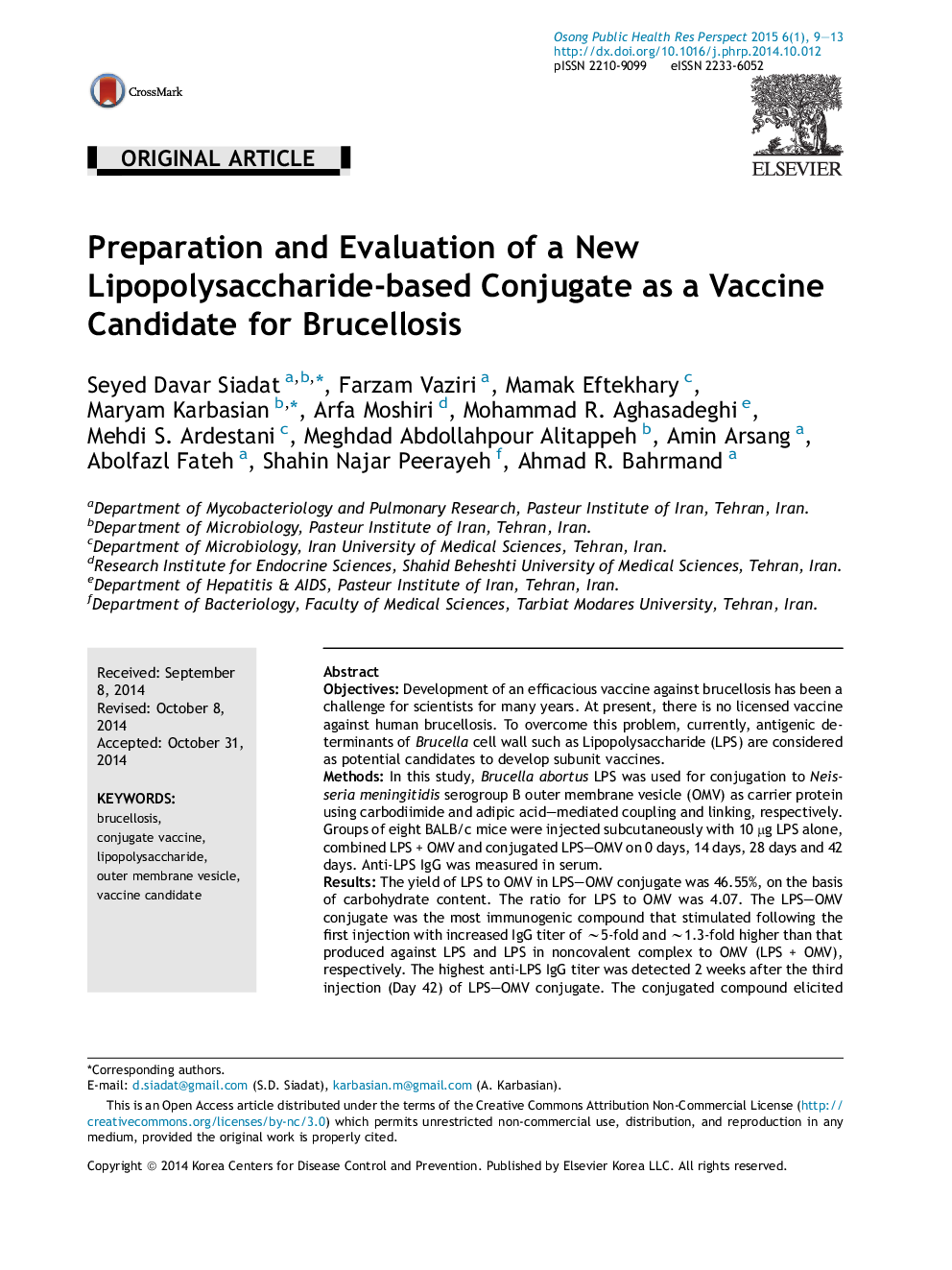| Article ID | Journal | Published Year | Pages | File Type |
|---|---|---|---|---|
| 4201949 | Osong Public Health and Research Perspectives | 2015 | 5 Pages |
ObjectivesDevelopment of an efficacious vaccine against brucellosis has been a challenge for scientists for many years. At present, there is no licensed vaccine against human brucellosis. To overcome this problem, currently, antigenic determinants of Brucella cell wall such as Lipopolysaccharide (LPS) are considered as potential candidates to develop subunit vaccines.MethodsIn this study, Brucella abortus LPS was used for conjugation to Neisseria meningitidis serogroup B outer membrane vesicle (OMV) as carrier protein using carbodiimide and adipic acid–mediated coupling and linking, respectively. Groups of eight BALB/c mice were injected subcutaneously with 10 μg LPS alone, combined LPS + OMV and conjugated LPS–OMV on 0 days, 14 days, 28 days and 42 days. Anti-LPS IgG was measured in serum.ResultsThe yield of LPS to OMV in LPS–OMV conjugate was 46.55%, on the basis of carbohydrate content. The ratio for LPS to OMV was 4.07. The LPS–OMV conjugate was the most immunogenic compound that stimulated following the first injection with increased IgG titer of ∼5-fold and ∼1.3-fold higher than that produced against LPS and LPS in noncovalent complex to OMV (LPS + OMV), respectively. The highest anti-LPS IgG titer was detected 2 weeks after the third injection (Day 42) of LPS–OMV conjugate. The conjugated compound elicited higher titers of IgG than LPS + OMV, that showed a 100–120-fold rise of anti-LPS IgG in mice.ConclusionThese results indicate that our conjugated LPS–OMV can be used as a brucellosis vaccine, but further investigation is required.
